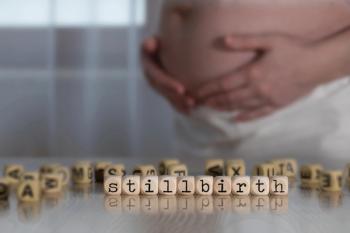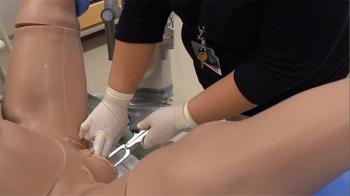
In-depth interviews with program administrators in Texas show that changes to Title X are decreasing access to services for teens and the quality of those services.

In-depth interviews with program administrators in Texas show that changes to Title X are decreasing access to services for teens and the quality of those services.

An analysis of Twitter postings shows that celebrity disclosures help drive discussions about pregnancy complications on social media.

A new study of nearly a quarter million women suggests that smoking during pregnancy increases risk of gestational diabetes mellitus (GDM).

Normal-weight women who lose body mass between the start of their first and second live pregnancies are much more likely to deliver prematurely in the latter pregnancy, according to new research from PLOS One.

Older women with preeclampsia have a 50% higher risk for spontaneous or iatrogenic preterm birth than younger women with preeclampsia, according to research from AOGS.

Research from Obstetrics & Gynecology aimed to better characterize stillbirth related to infection using clinical, histologic, and microbiologic data.

An incentive-based prenatal smoking cessation program for low-income women appears to improve birth outcomes and reduce costs.

New research from BMJ indicates that children of mothers with diabetes have higher rates of early-onset CVD.

New research shows that women with disabilities are more likely to suffer a miscarriage but are also more likely to receive preventive services.

Dr. Melissa S. Wong demonstrates a forceps delivery from beginning to end and provides step-by-step instructions.

Dr. Wong discusses the parts of the forceps and highlights the differences between various types.

Forceps deliveries are a unique and effective tool to assist patient and provider in achieving a vaginal delivery

A study published in BMJ suggests that inducing labor at no later than 41 weeks could be one of the few interventions that reduce stillbirths.

A large population-based cohort study in the American Journal of Obstetrics & Gynecology concluded that maternal prepregnancy impaired fasting glucose increases risk of preterm birth.

New research in The Journal of Maternal-Fetal & Maternal Medicine has found that cervical length measurement is a reliable indicator for predicting preterm delivery in women with threatened preterm labor.

Although a 2003 clinical trial overwhelmingly found that 17-α-hydroxyprogesterone caproate (17-OHPC) significantly decreases recurrent preterm birth (PTB) and neonatal morbidity, a recently published study in the American Journal of Perinatology found drastically different results.

Results from a recent presentation at the ANESTHESIOLOGY 2019 annual meeting indicate that women may be more open to using inhaled nitrous oxide (N2O) for pain management during labor.

These four statements can help provide ob/gyns with guidance about how to counsel patients with substance use disorder about breastfeeding.

Maternal serum endocan level may be a useful marker for predicting preterm birth (PTB) within 7 days in patients with threatened preterm labor, according to a recent study in The Journal of Maternal-Fetal & Neonatal Medicine.

Women with certain autoimmune rheumatic diseases have an elevated risk of various preterm birth (PTB) phenotypes, according to a large population-based, retrospective cohort study from BJOG.

Immediate postplacental insertion of an IUD is not only convenient for the patient, but also safe and effective for postpartum contraception. Here's what to be mindful of when performing the procedure following cesarean delivery.

Risk of stillbirth is known to be elevated in women who go to sleep supine late in pregnancy, but a new study suggests that may not be the only associated risk.

A new Swedish study indicates that the condition may be associated with higher risk of teenage birth, which could have negative health consequences for both the mothers and their babies.

A recently published study investigated whether maternal red blood cell (RBC) lead exposure is associated with intergenerational overweight and or obesity (OWO).

A new report from the Centers for Disease Control and Prevention compared the outcomes of mothers and their babies in Appalachia and the Delta with those of their counterparts elsewhere in the United States.